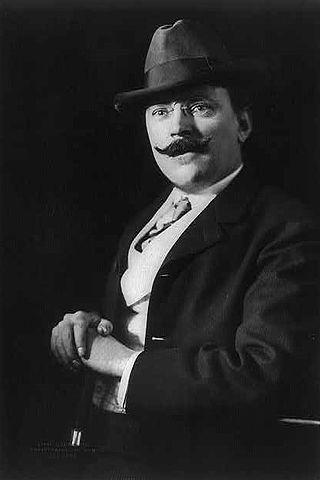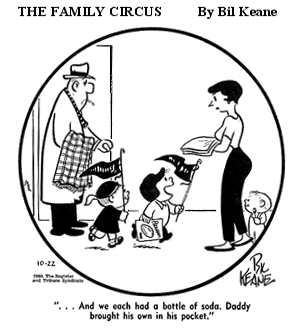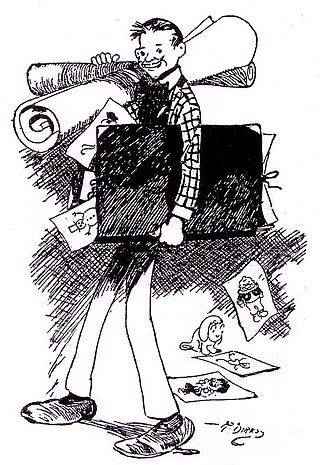
A comic strip is a sequence of cartoons, arranged in interrelated panels to display brief humor or form a narrative, often serialized, with text in balloons and captions. Traditionally, throughout the 20th and into the 21st century, these have been published in newspapers and magazines, with daily horizontal strips printed in black-and-white in newspapers, while Sunday papers offered longer sequences in special color comics sections. With the advent of the internet, online comic strips began to appear as webcomics.

A cartoon is a type of visual art that is typically drawn, frequently animated, in an unrealistic or semi-realistic style. The specific meaning has evolved, but the modern usage usually refers to either: an image or series of images intended for satire, caricature, or humor; or a motion picture that relies on a sequence of illustrations for its animation. Someone who creates cartoons in the first sense is called a cartoonist, and in the second sense they are usually called an animator.

The Yellow Kid is an American comic-strip character that appeared from 1895 to 1898 in Joseph Pulitzer's New York World, and later William Randolph Hearst's New York Journal. Created and drawn by Richard F. Outcault in the comic strip Hogan's Alley, the strip was one of the first Sunday supplement comic strips in an American newspaper, although its graphical layout had already been thoroughly established in political and other, purely-for-entertainment cartoons. Outcault's use of word balloons in The Yellow Kid influenced the basic appearance and use of balloons in subsequent newspaper comic strips and comic books.

Dave Berg was an American cartoonist, most noted for his five decades of work in Mad of which The Lighter Side of... was the most famous.

Richard Felton Outcault was an American cartoonist. He was the creator of the series The Yellow Kid and Buster Brown and is considered a key pioneer of the modern comic strip.

Jules Ralph Feiffer is an American cartoonist and author, who at one time was considered the most widely read satirist in the country. He won the Pulitzer Prize in 1986 for editorial cartooning, and in 2004 he was inducted into the Comic Book Hall of Fame. He wrote the animated short Munro, which won an Academy Award for Best Animated Short Film in 1961. The Library of Congress has recognized his "remarkable legacy", from 1946 to the present, as a cartoonist, playwright, screenwriter, adult and children's book author, illustrator, and art instructor.

The Family Circus is a syndicated comic strip created by cartoonist Bil Keane and, since Keane's death in 2011, written, inked and rendered (colored) by his son Jeff Keane. The strip generally uses a single captioned panel with a round border, hence the original name of the series, which was changed following objections from the magazine Family Circle. The series debuted February 29, 1960, and has been in continuous production ever since. According to publisher King Features Syndicate, it is the most widely syndicated cartoon panel in the world, appearing in 1,500 newspapers. Compilations of Family Circus comic strips have sold more than 13 million copies worldwide.

Henry is a comic strip created in 1932 by Carl Thomas Anderson. The title character is a young bald boy who is mostly mute in the comics. Except in a few early episodes, when the comic strip character communicates, he does so largely but not entirely through pantomime. He also spoke in a comic book series of 1946–1961 and in at least one Betty Boop cartoon from 1935 in which Betty Boop has a pet shop and Henry speaks to a dog in the window.

Speech balloons are a graphic convention used most commonly in comic books, comics, and cartoons to allow words to be understood as representing a character's speech or thoughts. A formal distinction is often made between the balloon that indicates speech and the one that indicates thoughts; the balloon that conveys thoughts is often referred to as a thought bubble or conversation cloud.

Rudolph Dirks was one of the earliest and most noted comic strip artists, well known for The Katzenjammer Kids.
A gag cartoon is most often a single-panel cartoon, usually including a caption beneath the drawing. In some cases, dialogue may appear in speech balloons, following the common convention of comic strips. A pantomime cartoon carries no caption.

A panel is an individual frame, or single drawing, in the multiple-panel sequence of a comic strip or comic book, as well as a graphic novel. A panel consists of a single drawing depicting a frozen moment. When multiple panels are present, they are often, though not always, separated by a short amount of space called a gutter.

Stanley George Cross was born in the United States but was known as an Australian strip and political cartoonist who drew for Smith's Weekly and the Herald & Weekly Times. Cross is famous for his iconic 1933 "For gorsake, stop laughing: this is serious!” cartoon as well as the Wally and the Major and The Potts cartoon strips.
Vic Lockman was an American Christian cartoonist and comic strip writer. He started cartooning from a young age, taught by his father. He was once head of the art department for the School of Aviation Medicine at Randolph Field, Texas. He was married and had 6 children. His son, Mark Thomas Lockman (1952–1989) was a journalist, to whom one of Vic's cartoon books was dedicated.

Australian comics have been published since 1908 and Australian comics creators have gone to produce influential work in the global comics industry,
This is a timeline of significant events in comics prior to the 20th century.
The history of comics has followed different paths in different parts of the world. It can be traced back to early precursors such as Trajan's Column, in Rome, Egyptian hieroglyphs and the Bayeux Tapestry.

Comics journalism is a form of journalism that covers news or nonfiction events using the framework of comics, a combination of words and drawn images. Typically, sources are actual people featured in each story, and word balloons are actual quotes. The term "comics journalism" was coined by one of its most notable practitioners, Joe Sacco. Other terms for the practice include "graphic journalism," "comic strip journalism", "cartoon journalism", "cartoon reporting", "comics reportage", "journalistic comics", "sequential reportage," and "sketchbook reports".

Naren Ray better known as Sufi, was an Indian cartoonist with a career spanning nearly five decades, during which time he published political as well as children's cartoons in prominent Bengali magazines and newspapers. His role as a political cartoonist earned him more ire than dividends, while his work as a strip cartoonist was unique. His cartoons were followed by generations of Bengali middle-class people without ever knowing his true identity. He was a regular contributor to Shankar's Weekly, published by political cartoonist K. Shankar Pillai. Even though his works appeared exclusively in Bengali-language print media, his work had uniquely close ties to the leftist movement, rendering his drawings and ideas peerless.
The history of American comics began in the 19th century in mass print media, in the era of sensationalist journalism, where newspaper comics served as further entertainment for mass readership. In the 20th century, comics became an autonomous art medium and an integral part of American culture.